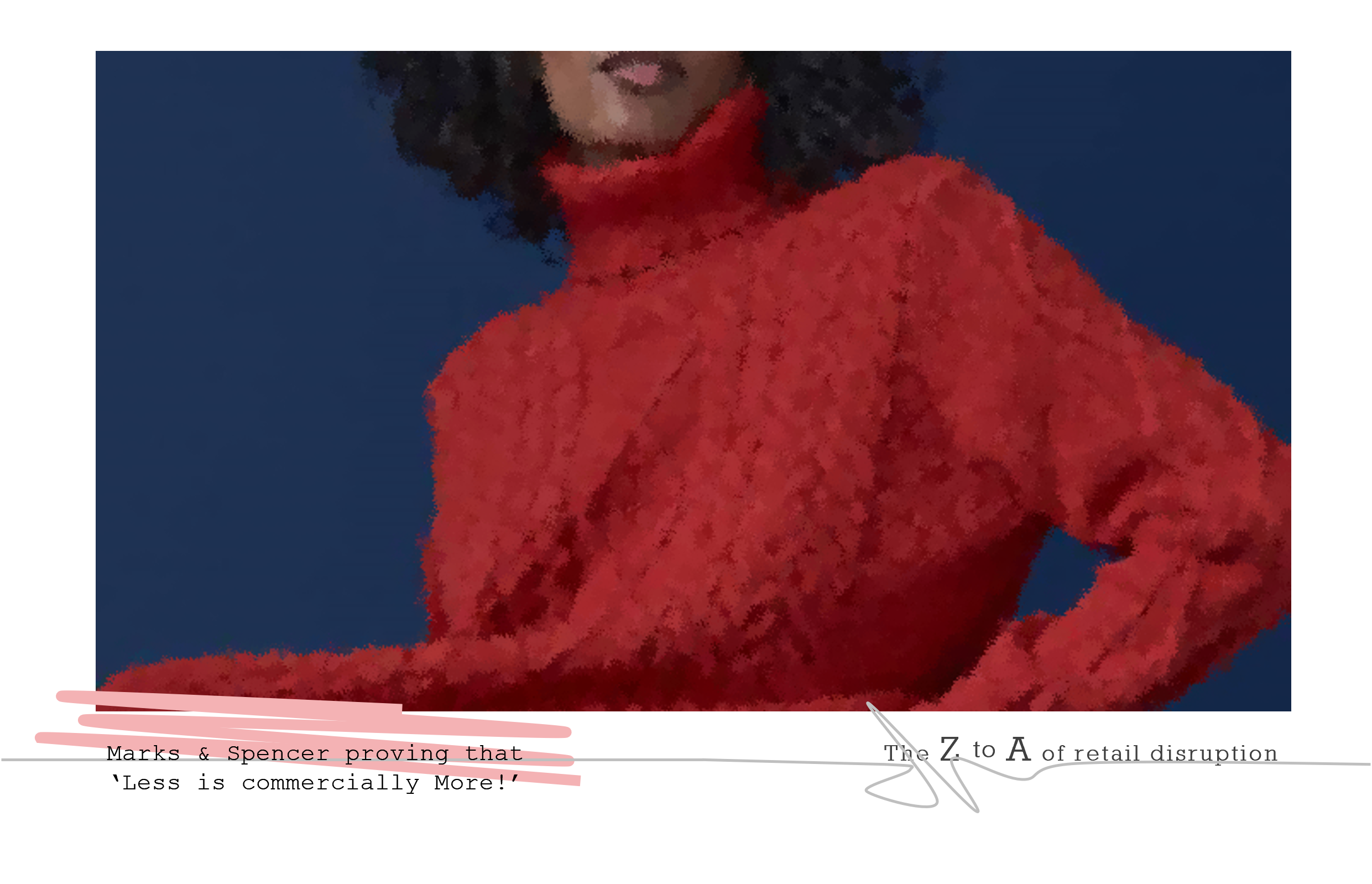It has always been one of the most difficult messages to get across to buyers & merchandisers. That by reducing your number of options, you can drive more sales & profit.
M&S has kindly released figures that prove exactly this. A recent reduction in womenswear options has certainly not held back sales growth. Although its womenswear range was streamlined by 5%, sales jumped 15%.
Of course, it is more complicated than just numbers. The reduced options that survive must be more razor focused than ever on what the customer wants. The reduced options need to be the correct ones.
This is why retailers get nervous about assortment cuts. In many cases they have neither the quantitative research, nor the qualitative experience, to select the most commercial categories and options, in the most attractive and desirable designs and colours.
M&S has shared its homework. The lessons are bold and refreshingly simple.
Removing duplication, buying better and deeper in core product, and investing in emerging growth categories means M&S now stock more stylish, better value ranges that are easier to shop. What’s more, the business had 276 lines that generated sales of more than £1m each in the first half of 2022 and sales of those lines were up 25% year on year.
In short, understand what sells, and critically, understand what could have sold more if you had bought more stock. You can only sell what you have! Comprehensive sales data, both analytical and visual, and some smart people to understand it, is of course a necessity.
And to reduce duplication or similar lines, most often caused by buyers not talking to each other, ensure that they have clear and distinct buying responsibilities, and ongoing transparency and collaboration.
M&S has also benefitted from a strategic focus of these depth and availability improvements, as well as competitive pricing, on its essential and non-discretionary products.
Put simply, take the most popular lines over time, remove poorer selling similar lines, inject a little sensible newness, buy them in depth, and sell with competitive prices. You will still have to work hard to add more seasonal and fashionable lines, but at least this element of risk can be set against the relative certainty of perennial best sellers.
Additional benefits of buying less will also include simplified supply chains, volume order reductions, higher achieved margins, and more stable supplier relationships. What will also happen is that the number of unsold ‘risks’ will decrease, and the amount of unsold stock earmarked for waste or re-sell will be dramatically reduced.
Getting better at buying less, and better at selling more of it, is also a cornerstone of sustainability. The pressures on recycling diminish.
So take a lesson from Marks & Spencer, and whilst none of this is rocket science it could just send your CEO over the moon, and back.
Guess how much they’ll love you then?
